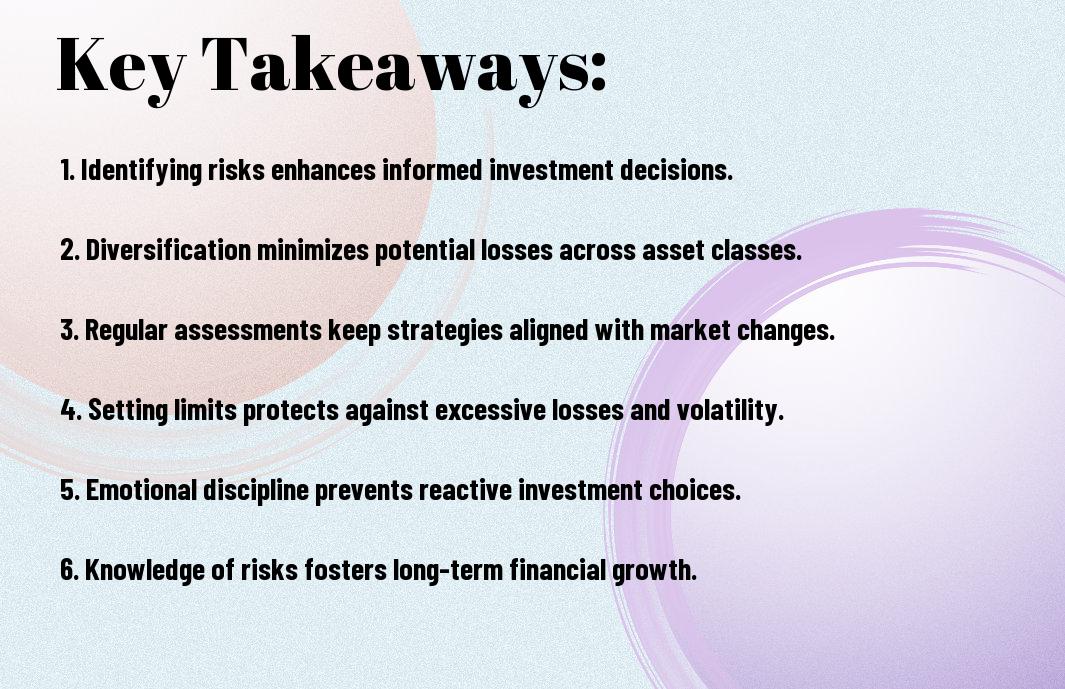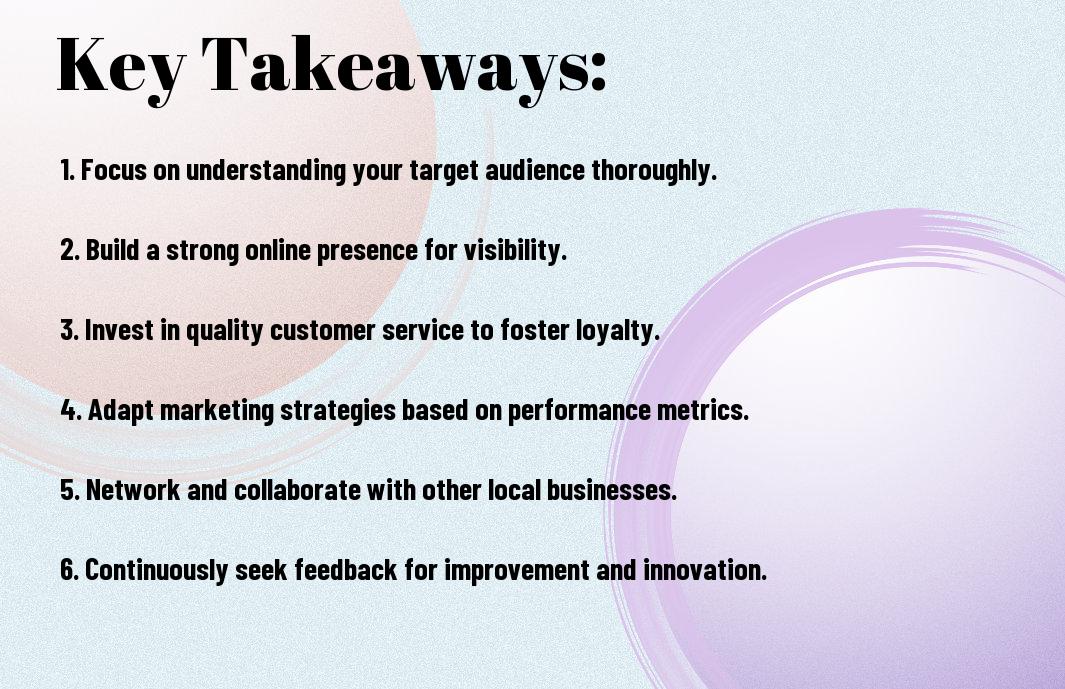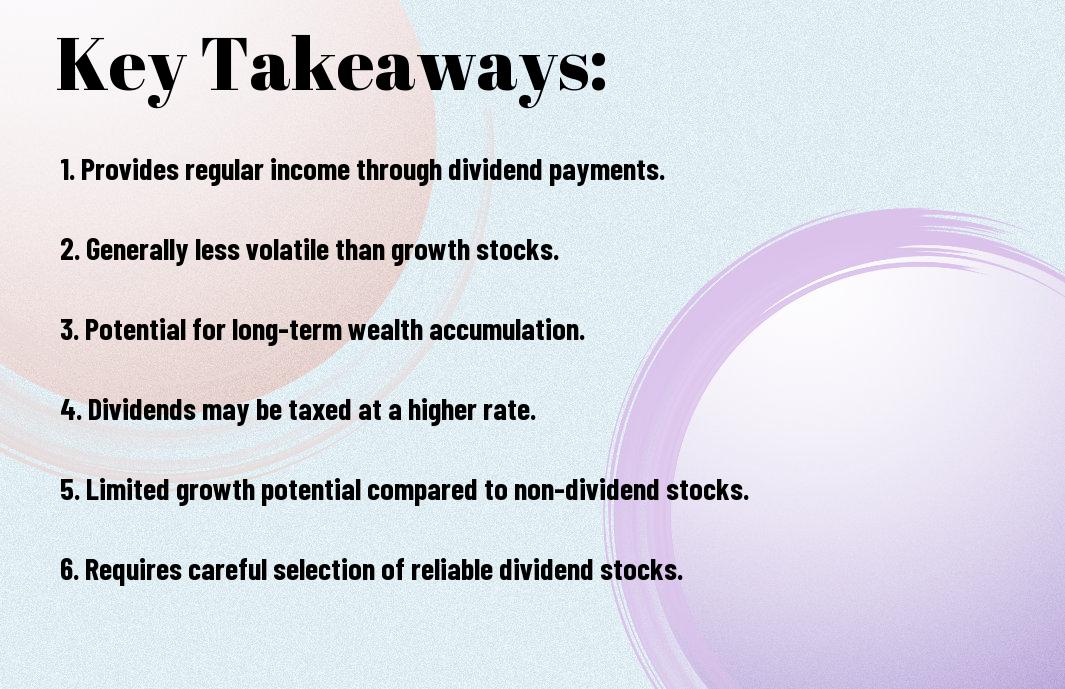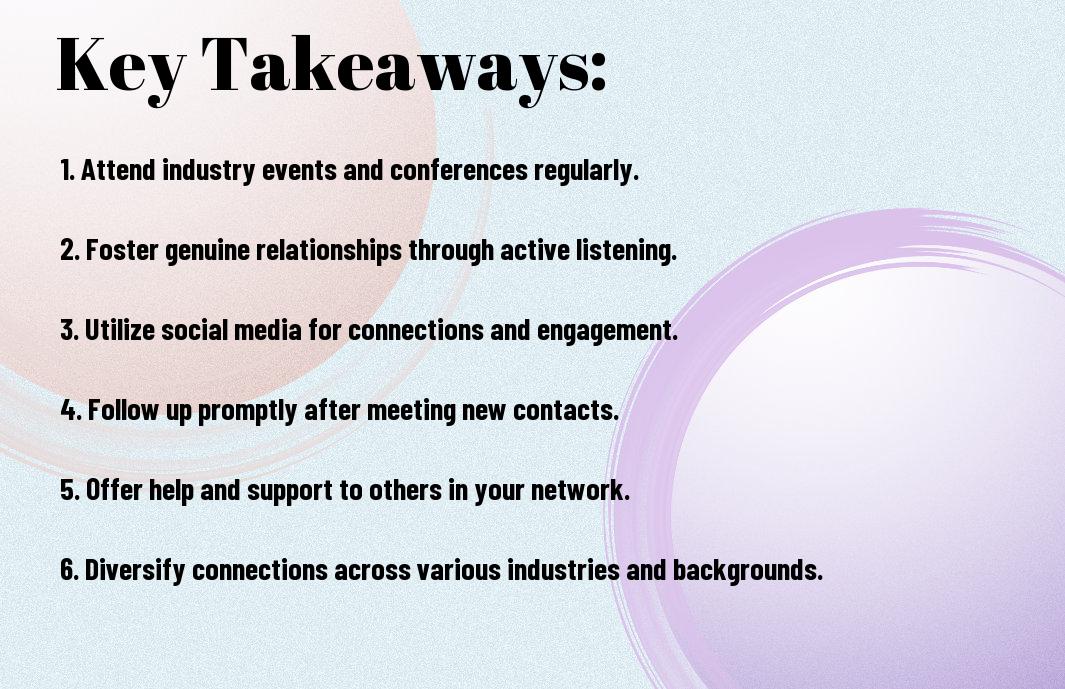Most investors underestimate the importance of risk management in achieving long-term financial success. By understanding and managing the risks associated with your investment choices, you can better protect your capital and enhance your potential returns. This article will guide you through the imperative strategies and techniques that can empower your investment decisions, helping you navigate uncertainties and build a more resilient portfolio. Embracing risk management can be the key to unlocking greater financial stability and achieving your investment goals.
Key Takeaways:
- Diversification helps to spread risk across different assets, reducing the impact of a poor-performing investment on overall returns.
- Risk assessment involves evaluating the potential for loss and understanding market dynamics, which is vital for informed decision-making.
- Risk tolerance defines an investor’s ability and willingness to endure losses, guiding the choice of investment strategies.
- Regular monitoring of investments and market conditions can help to quickly adjust strategies in response to changing circumstances.
- Strategy formation that includes risk management practices, such as setting stop-loss orders, can protect gains and minimize losses.

Understanding Risk Management
A comprehensive understanding of risk management is necessary for making informed investment decisions. By identifying, analyzing, and mitigating potential risks, you can enhance your chances of achieving financial success. This proactive approach helps you navigate market fluctuations and prepares you for uncertainties, allowing you to safeguard your investments while pursuing growth opportunities.
Definition and Importance
Among the key concepts in finance, risk management is the practice of identifying and addressing potential threats to your investment portfolio. Its importance lies in ensuring that you effectively balance risk and return, enabling you to make better financial decisions. A solid risk management strategy not only protects your investments but also maximizes the potential for returns.
Types of Risks in Investment
Behind every investment, various types of risks can impact your financial outcomes. Understanding these risks allows you to tailor your strategies to mitigate them effectively. Here are some common types of risks you should be aware of:
- Market Risk
- Credit Risk
- Liquidity Risk
- Operational Risk
- Regulatory Risk
This list highlights the importance of being aware of the potential pitfalls in the investment landscape. The following table outlines each type of risk and its description:
| Type of Risk | Description |
| Market Risk | Potential losses due to market fluctuations. |
| Credit Risk | The risk of loss from a borrower’s failure to repay. |
| Liquidity Risk | Difficulty in selling an asset without affecting its price. |
| Operational Risk | Losses resulting from inadequate internal processes. |
| Regulatory Risk | The risk of changing laws impacting investments. |
In addition to recognizing these risks, you should evaluate the potential impact they can have on your investment strategy. Developing a keen sense of risk allows you to create a diversified portfolio that can withstand various market conditions. Here are a few factors to consider:
- Correlation between asset classes
- Your investment horizon
- Your risk tolerance
- Economic and industry trends
- Geopolitical events
This analysis will empower you to make informed decisions tailored to your personal financial situation and investment goals. The following table provides an overview of these key considerations:
| Factor | Description |
| Correlation | Relationship between different asset performances. |
| Investment Horizon | Your timeframe for achieving financial goals. |
| Risk Tolerance | Your comfort level with market risks. |
| Trends | How market movements affect investments. |
| Geopolitical Events | Impact of global events on investment performance. |
Risk Assessment Strategies
While navigating the investment landscape, having effective risk assessment strategies is vital for your success. You should prioritize developing a framework that helps identify, evaluate, and mitigate potential risks. For further insights, consider exploring Understanding the Role of Risk Management in Investments.
Identifying Potential Risks
An vital first step in risk assessment is identifying potential risks that could impact your investments. This involves analyzing market trends, economic conditions, and specific factors related to your investment choices. By staying vigilant and informed, you can pinpoint risks early on.
Evaluating Risk Impact
After identifying potential risks, the next phase is evaluating their potential impact on your investments. It’s important to assess how these risks could affect your portfolio’s performance both short-term and long-term.
Considering various scenarios will allow you to prioritize risks based on their likelihood and impact level. This assessment helps you to make informed decisions, allowing you to allocate your resources wisely and implement risk mitigation strategies accordingly. Understanding the severity of each risk enables you to establish a proactive approach, ensuring that your investment journey remains on track and aligned with your goals.
Risk Mitigation Techniques
Once again, effective risk management can significantly enhance your investment outcomes. By employing various risk mitigation techniques, you can minimize potential losses while maximizing gains. Strategies such as diversification, hedging, and setting stop-loss orders serve as important tools in constructing a robust investment portfolio that can withstand market fluctuations. Understanding and implementing these techniques can help you safeguard your capital and improve your long-term success.
Diversification
Between different asset classes, sectors, and geographical regions, diversification plays a vital role in risk mitigation. By spreading your investments across various opportunities, you reduce the impact of poor performance in any single investment. This approach can enhance your portfolio’s stability and lower overall volatility, allowing you to achieve more consistent returns over time.
Hedging Strategies
An effective way to protect your investments from adverse price movements is through hedging strategies. This involves using financial instruments, such as options or futures contracts, to offset potential losses in your portfolio. By systematically implementing these strategies, you can provide a safety net against market downturns and preserve your capital.
But it’s important to understand that hedging is not a guaranteed solution. While it can effectively limit downside risks, it may also limit potential gains. You should carefully evaluate your investment goals and risk tolerance when considering hedging as part of your strategy. The key is to strike a balance between protection and the opportunity for profit, ensuring your approach aligns with your overall investment plan.

The Psychological Aspect of Risk Management
Despite the objective nature of risk management, the psychological elements involved significantly influence your investment success. Understanding these mental factors can help you implement effective strategies. By exploring 5 Most Common Measures For Managing Your Investment, you can better navigate the complexities of your own mindset and improve your decision-making process.
Behavioral Biases
Aspect of risk management that often goes overlooked is the role of behavioral biases. You may fall prey to biases such as overconfidence, anchoring, or herd mentality, which can distort your risk perception and lead to poor investment choices. Recognizing these biases allows you to better position yourself against their effects and make more rational decisions.
Emotional Decision-Making
With emotional decision-making, human emotions can heavily sway your investment judgments, leading to impulsive and irrational choices. Wealth-related anxiety or fear can shift your focus away from solid investment strategies, so it’s imperative to identify when emotions are taking the lead in your financial decisions. By learning to manage these feelings, you can create a more balanced approach to risk.
But keeping emotions in check during investment decisions is not always straightforward. For example, when facing market volatility, the fear of losing money may prompt you to exit a position prematurely—potentially missing out on future gains. Instead, developing a disciplined investment strategy can help you navigate emotional upheavals, enabling you to adhere to your risk management plan even in challenging times.
Case Studies on Successful Risk Management
Your understanding of risk management can be enhanced through analyzing real-world examples. Successful companies have employed effective risk management strategies that resulted in positive outcomes, including:
- 1. Johnson & Johnson: Utilized crisis management during the Tylenol poisonings, regaining consumer trust and market share.
- 2. Microsoft: Implemented robust cybersecurity measures, mitigating the impact of data breaches and maintaining customer confidence.
- 3. Walmart: Adopted efficient supply chain management frameworks with contingency plans, leading to increased resilience against market fluctuations.
- 4. Procter & Gamble: Launched a diverse product portfolio to spread risk, achieving consistent revenue growth despite market volatility.
Lessons from Industry Leaders
From the experiences of these industry leaders, you learn that effective risk management often combines proactive planning with flexible strategies. Adapting to changing environments and maintaining open communication can significantly enhance your investment resilience.
Analyzing Failures and Recovery
Case studies in failed risk management highlight the lessons that lead to recovery and success. The fallout from the 2008 financial crisis, for example, reveals that inadequate risk assessment and over-leveraging can lead to significant losses.
Studies of the 2008 financial crisis emphasize the importance of evaluating both internal and external factors in risk management. Institutions that implemented comprehensive monitoring systems and diversified their investments were better equipped to recover. Learning from these failings can inform your future investment strategies, making you more resilient against inevitable market shifts.
Integrating Risk Management into Investment Strategy
Now, integrating risk management into your investment strategy is crucial for achieving long-term success. By actively incorporating risk assessment into your decision-making process, you can better identify potential threats and market volatility. This approach not only safeguards your investments but also enables you to capitalize on opportunities with a more informed perspective. In turn, you can align your risk appetite with your overall financial goals, fostering a balanced and sustainable portfolio.
Creating an Effective Risk Management Plan
The foundation of a robust investment strategy lies in creating an effective risk management plan tailored to your financial objectives. Start by evaluating your risk tolerance, investment horizon, and asset allocation. Next, identify specific risks associated with your investments, such as market fluctuations or geopolitical factors. By establishing clear guidelines for risk exposure and monitoring your portfolio regularly, you will enhance your ability to adapt to changing circumstances and maintain control over your financial future.
Tools and Resources for Investors
Risk management in investing is supported by a variety of tools and resources available to you. Utilizing financial software, risk assessment models, and market research platforms can enhance your understanding of potential risks associated with your investments. These tools enable you to analyze data, simulate different scenarios, and evaluate the overall risk profile of your portfolio, empowering you to make informed decisions that align with your financial goals.
Another valuable resource for effective risk management is access to educational materials and courses offered by financial institutions or online platforms. These can help you refine your investment strategy, learn advanced risk assessment techniques, and strengthen your overall market knowledge. Additionally, engaging with professional financial advisors can provide personalized guidance to ensure your investment approach incorporates the latest risk management practices, helping you navigate uncertainties and enhance your financial outcomes.
Summing up
From above, it’s clear that effective risk management is important to achieving investment success. By identifying, assessing, and mitigating potential risks, you can enhance your decision-making process and protect your financial interests. Understanding your risk tolerance and diversifying your portfolio further empower you to navigate market volatility with confidence. Embracing these principles not only safeguards your investments but also positions you for long-term growth and stability in your financial journey.
Q: What is the significance of risk management in the investment process?
A: Risk management plays a vital role in the investment process by helping investors identify, assess, and prioritize potential risks associated with their investment choices. By understanding the various risks, such as market volatility, credit risk, and liquidity risk, investors can make informed decisions that align with their risk tolerance and investment goals. Effective risk management strategies enable investors to mitigate potential losses and protect their capital, ultimately contributing to the long-term success of their investment portfolio.
Q: How can investors assess their risk tolerance before making investment decisions?
A: Assessing risk tolerance involves evaluating an investor’s financial situation, investment goals, and emotional response to risk. Tools such as risk tolerance questionnaires can aid in this assessment by prompting investors to consider their comfort level with potential losses and market fluctuations. Additionally, reviewing past investment experiences and understanding the time horizon for their investments can further clarify an investor’s capacity to handle risk. This self-assessment is important for developing a personalized investment strategy that aligns with their risk profile.
Q: What common strategies do investors use for effective risk management?
A: Investors employ several strategies for effective risk management, including diversification, asset allocation, and regular portfolio rebalancing. Diversification involves spreading investments across various asset classes and sectors to reduce exposure to any single risk. Asset allocation refers to the distribution of an investment portfolio among different asset categories, such as stocks, bonds, and real estate, tailored to the investor’s risk tolerance and financial goals. Regular portfolio rebalancing ensures that the investment mix remains aligned with the investor’s risk profile and market conditions, helping to maintain the desired level of risk over time.







